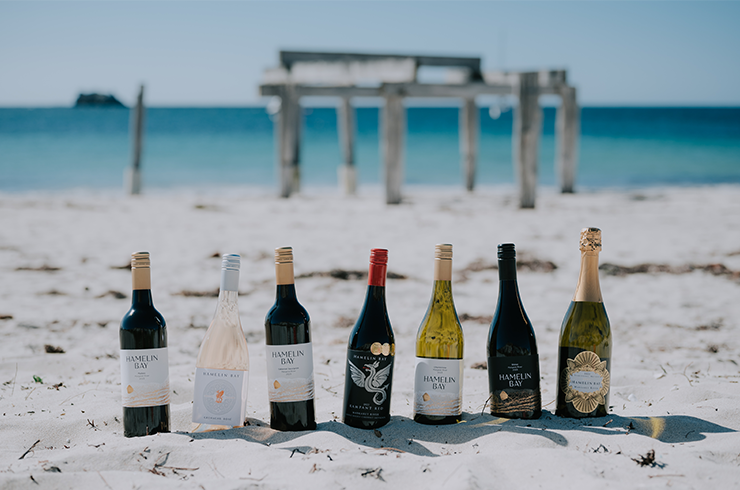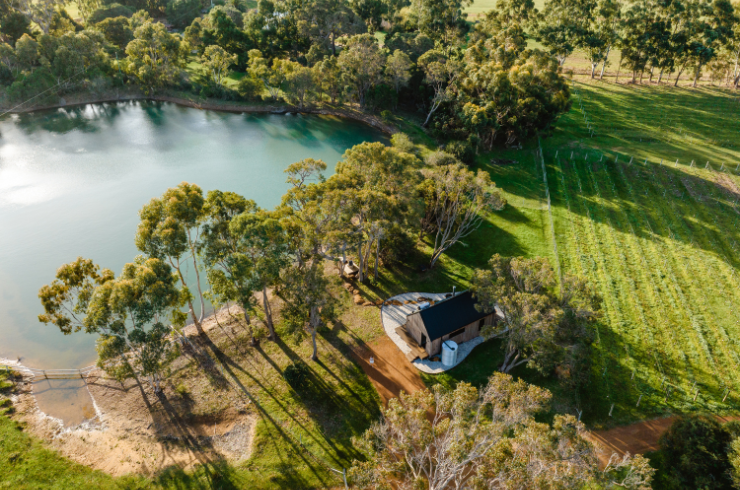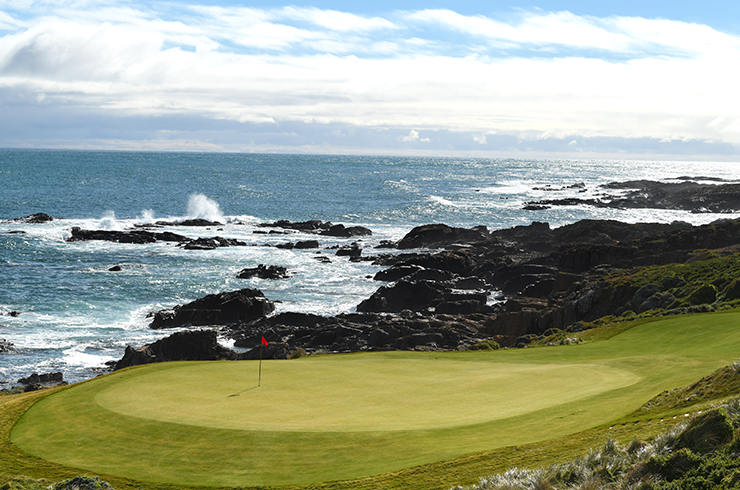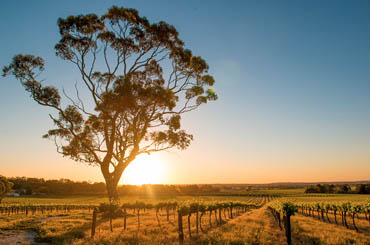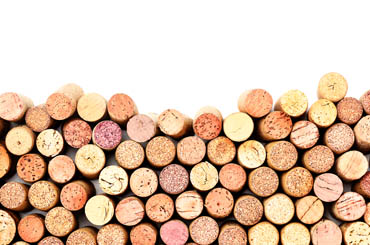It will be obvious from the foregoing that French vignerons regard much of the impact of climate is inextricably involved in terroir. Their Australian and Californian counterparts turn the approach upside down: they argue that climate is the most important influence on the quality of grapes, without denying that in some instances the soil, subsoil and rock components of terroir are of equal importance (Coonawarra being a prime example).
The first concept to grasp is the difference between macro-climate (regional climate), meso-climate (site climate) and micro-climate (the immediate climate among rows and within a grapevine canopy), the last a much-misused word. So much depends on the topography of the region; if it is laser flat, the data may well be accepted at face value. But even there, the French notion of terroir comes into play: this encompasses both terrestrial and aerial factors. Thus Coonawarra has a largely homogenous climate (up to two weeks’ difference in picking dates from north to south), but vines growing on the terra rossa (red soil) produce vastly superior cabernet sauvignon and shiraz to those on the sandy grey or (worse still) heavy black soils which, right or wrong, also fall within the official Coonawarra Geographic Indication (GI).
It is also important to understand what an important factor wind is in determining the ability of a region, an individual site and/or a particular vintage to produce grapes of a predictable quality or style. The easiest example to comprehend (if one has visited it) is California’s Salinas Valley, followed closely by California’s Carneros. Both of these are relatively flat (Salinas particularly) and the winds blow virtually every day through the growing season for a predictable period each day and in an absolutely inevitable direction. They effectively turn what would be warm growing conditions in the absence of wind into cool conditions.
It will be obvious from the foregoing that French vignerons regard much of the impact of climate is inextricably involved in terroir. Their Australian and Californian counterparts turn the approach upside down: they argue that climate is the most important influence on the quality of grapes, without denying that in some instances the soil, subsoil and rock components of terroir are of equal importance (Coonawarra being a prime example).
The first concept to grasp is the difference between macro-climate (regional climate), meso-climate (site climate) and micro-climate (the immediate climate among rows and within a grapevine canopy), the last a much-misused word. So much depends on the topography of the region; if it is laser flat, the data may well be accepted at face value. But even there, the French notion of terroir comes into play: this encompasses both terrestrial and aerial factors. Thus Coonawarra has a largely homogenous climate (up to two weeks’ difference in picking dates from north to south), but vines growing on the terra rossa (red soil) produce vastly superior cabernet sauvignon and shiraz to those on the sandy grey or (worse still) heavy black soils which, right or wrong, also fall within the official Coonawarra Geographic Indication (GI).
The first concept to grasp is the difference between macro-climate (regional climate), meso-climate (site climate) and micro-climate (the immediate climate among rows and within a grapevine canopy), the last a much-misused word. So much depends on the topography of the region; if it is laser flat, the data may well be accepted at face value. But even there, the French notion of terroir comes into play: this encompasses both terrestrial and aerial factors. Thus Coonawarra has a largely homogenous climate (up to two weeks’ difference in picking dates from north to south), but vines growing on the terra rossa (red soil) produce vastly superior cabernet sauvignon and shiraz to those on the sandy grey or (worse still) heavy black soils which, right or wrong, also fall within the official Coonawarra Geographic Indication (GI).
It is also important to understand what an important factor wind is in determining the ability of a region, an individual site and/or a particular vintage to produce grapes of a predictable quality or style. The easiest example to comprehend (if one has visited it) is California’s Salinas Valley, followed closely by California’s Carneros. Both of these are relatively flat (Salinas particularly) and the winds blow virtually every day through the growing season for a predictable period each day and in an absolutely inevitable direction. They effectively turn what would be warm growing conditions in the absence of wind into cool conditions.
It will be obvious from the foregoing that French vignerons regard much of the impact of climate is inextricably involved in terroir. Their Australian and Californian counterparts turn the approach upside down: they argue that climate is the most important influence on the quality of grapes, without denying that in some instances the soil, subsoil and rock components of terroir are of equal importance (Coonawarra being a prime example).
The first concept to grasp is the difference between macro-climate (regional climate), meso-climate (site climate) and micro-climate (the immediate climate among rows and within a grapevine canopy), the last a much-misused word. So much depends on the topography of the region; if it is laser flat, the data may well be accepted at face value. But even there, the French notion of terroir comes into play: this encompasses both terrestrial and aerial factors. Thus Coonawarra has a largely homogenous climate (up to two weeks’ difference in picking dates from north to south), but vines growing on the terra rossa (red soil) produce vastly superior cabernet sauvignon and shiraz to those on the sandy grey or (worse still) heavy black soils which, right or wrong, also fall within the official Coonawarra Geographic Indication (GI).

For Australia climate is the most significant factor (outside vignerons’ control) impinging on grape quality and wine style...for the winemakers of France, soil is of greater importance.
It is also important to understand what an important factor wind is in determining the ability of a region, an individual site and/or a particular vintage to produce grapes of a predictable quality or style. The easiest example to comprehend (if one has visited it) is California’s Salinas Valley, followed closely by California’s Carneros. Both of these are relatively flat (Salinas particularly) and the winds blow virtually every day through the growing season for a predictable period each day and in an absolutely inevitable direction. They effectively turn what would be warm growing conditions in the absence of wind into cool conditions.
Now take an area like the Yarra Valley in Victoria, with multiple hills of differing heights and sub-valleys facing variously every point of the compass. South-facing slopes are in principle the coolest, north-facing the warmest. The dominant wind, particularly when wind speed increases, is north or north-west. In some circumstances a sheltered south-west-facing slope may creep up on an exposed northeast-facing slope in terms of ripening capacity.
Nonetheless, for Australia climate is the most significant factor (outside vignerons’ control) impinging on grape quality and wine style. As I have observed earlier, for the winemakers of France, soil is of greater importance.
Indeed, if one looks at Bordeaux and Burgundy, France’s two greatest wine districts, and then focuses the microscope on their principal subregions, there is detailed discussion on the physical/terrestrial elements of terroir; by this I mean the soil profile from the surface to the subsoil. But in none of the books or atlases (including Hugh Johnson’s great The World Atlas of Wine, first published in 1971, the 7th edition by Mitchell Beazley, 2013) is there any attempt to dissect or measure climate in the way Australian academics have so done.It is true that spring frosts and summer hailstorms may hit one spot and miss another, and no less true that one château or grower may be more successful than his neighbour in one year but not the next. Even more so is it true that climatic swings from one vintage to the next are of crucial importance in shaping the quality (and to a lesser degree the character) of the wines of each vintage.
There is thus a fundamental distinction between climate and weather, and by their very nature these swings or changes cannot usefully be individually recorded; one inevitably has to take long-term averages in ascribing temperature, rainfall, humidity, wind, frost and whatever other data one wishes to use in presenting an overall picture of the macro-climate of a region. So it is understandable that the French tend to take macro-climate for granted, and to look to the soil and topographic components of terroir to explain and characterise their wines.
All of this in turn proceeds on patterns of classification and constraint which have been built up over many centuries, even if formal French codification did not start until the middle of the 19th century and only gained the force of law in the 20th century.
How different the position of the New World. There are effectively no constraints on which grape varieties you can plant, how you prune them or how you use and blend the wine you make from the grapes. Almost every one of the regions discussed in this book is of much larger scale and of more diverse topography than most of the regions of France: as well as Coonawarra, Padthaway, the Riverland in South Australia and the Riverina in New South Wales are topographic exceptions on the Australian front.
If this were not enough, Australia’s experience in matching terroir, climate and grape varieties is, in some instances, and mainly in the cooler regions of Australia, less than 30 years old. Examples include (but are not limited to) Yarra Valley and Tasmanian Pinot Noir; Great Southern Riesling; Adelaide Hills Sauvignon Blanc; Heathcote (and other Central Victorian regions) Shiraz; Margaret River and Yarra Valley Chardonnay; and Tasmanian sparkling wine. The symbiotic link between Hunter Valley Semillon, Coonawarra Cabernet Sauvignon, Clare and Eden Valley Riesling and Barossa Valley Shiraz go back 100 years or more, but have only been brought into focus over the last 30–40 years. Moreover, each of these regions produces a multiplicity of other varieties, and none has exclusivity on its core variety.
So with such a complex matrix of grape variety, soil, aspect and topography within each Australian region (and each subregion) we have had little option but to come back to climate as the primary factor in determining wine character. In doing so the experts in Australasia and the United States have encountered great difficulties in providing climatic indices which are on the one hand sufficiently succinct to be understood and of practical use, and on the other meaningful and reasonably accurate.
Nonetheless, most attention has focused on temperature as being the most important aspect of climate in determining wine style. In 1944 the distinguished American oenologists Amerine and Winkler introduced a classification system which traces its roots back to 1735, and thence to the mid-19th-century observation by de Candolle that there is little vegetative growth in the vine at temperatures below 10°C (50°F). Their system has been refined (and criticised) by various commentators with a special interest in climate, but all agree that temperatures below 10°C should be disregarded in assessing what Amerine and Winkler called heat degree days (HDD).
The foremost Australian research academic, Dr John Gladstones, writes, ‘Temperature is central to all aspects of viticulture … it alone controls vine phenology, i.e. the vine’s rate of physiological development through budbreak to flowering, setting, veraison, and finally fruit ripeness.’ He goes on to provide a more accurate measure of climate with his concept (and calculation of ) E° days, or biologically effective degree days at page 11 of his masterwork Wine, Terroir and Climate Change (Wakefield Press, 2011).
In his book, Gladstones provides a far more detailed analysis of his approach to all aspects of measuring climate, in part referenced by a series of tables of 18 regions from around the world, and separate site adjustments and notes for the extremely detailed figures in the tables proper. Thus, the E° figures have been adjusted as far as possible by Gladstones to incorporate latitude, altitude, diurnal temperature range, vineyard slopes, inclination to midday sun, soil type, proximity to/distance from water bodies and exposure to/protection from prevailing winds. No one has previously attempted this, and it is a major advance.
But Gladstones would be the first to point out that exceptions will prove the rule: any vigneron will know that even a 100-metre separation of vineyard blocks may result in very different outcomes for the same variety grown and tended in the same way.
He also validly draws attention to seasonal variability, which in various parts of eastern Australia has been grossly affected by drought (from 1996 to 2010), extreme prolonged heat in 1998, bushfires in Victoria in 2009, continuous rain in a cool 2011 spring and summer. There is no way these aberrations can or should be incorporated into the statistics or regional guidelines, beyond noting that some regions may be more liable to them than others.
Now take an area like the Yarra Valley in Victoria, with multiple hills of differing heights and sub-valleys facing variously every point of the compass. South-facing slopes are in principle the coolest, north-facing the warmest. The dominant wind, particularly when wind speed increases, is north or north-west. In some circumstances a sheltered south-west-facing slope may creep up on an exposed northeast-facing slope in terms of ripening capacity.
Nonetheless, for Australia climate is the most significant factor (outside vignerons’ control) impinging on grape quality and wine style. As I have observed earlier, for the winemakers of France, soil is of greater importance.
Indeed, if one looks at Bordeaux and Burgundy, France’s two greatest wine districts, and then focuses the microscope on their principal subregions, there is detailed discussion on the physical/terrestrial elements of terroir; by this I mean the soil profile from the surface to the subsoil. But in none of the books or atlases (including Hugh Johnson’s great The World Atlas of Wine, first published in 1971, the 7th edition by Mitchell Beazley, 2013) is there any attempt to dissect or measure climate in the way Australian academics have so done.It is true that spring frosts and summer hailstorms may hit one spot and miss another, and no less true that one château or grower may be more successful than his neighbour in one year but not the next. Even more so is it true that climatic swings from one vintage to the next are of crucial importance in shaping the quality (and to a lesser degree the character) of the wines of each vintage.
There is thus a fundamental distinction between climate and weather, and by their very nature these swings or changes cannot usefully be individually recorded; one inevitably has to take long-term averages in ascribing temperature, rainfall, humidity, wind, frost and whatever other data one wishes to use in presenting an overall picture of the macro-climate of a region. So it is understandable that the French tend to take macro-climate for granted, and to look to the soil and topographic components of terroir to explain and characterise their wines.
All of this in turn proceeds on patterns of classification and constraint which have been built up over many centuries, even if formal French codification did not start until the middle of the 19th century and only gained the force of law in the 20th century.
How different the position of the New World. There are effectively no constraints on which grape varieties you can plant, how you prune them or how you use and blend the wine you make from the grapes. Almost every one of the regions discussed in this book is of much larger scale and of more diverse topography than most of the regions of France: as well as Coonawarra, Padthaway, the Riverland in South Australia and the Riverina in New South Wales are topographic exceptions on the Australian front.
If this were not enough, Australia’s experience in matching terroir, climate and grape varieties is, in some instances, and mainly in the cooler regions of Australia, less than 30 years old. Examples include (but are not limited to) Yarra Valley and Tasmanian Pinot Noir; Great Southern Riesling; Adelaide Hills Sauvignon Blanc; Heathcote (and other Central Victorian regions) Shiraz; Margaret River and Yarra Valley Chardonnay; and Tasmanian sparkling wine. The symbiotic link between Hunter Valley Semillon, Coonawarra Cabernet Sauvignon, Clare and Eden Valley Riesling and Barossa Valley Shiraz go back 100 years or more, but have only been brought into focus over the last 30–40 years. Moreover, each of these regions produces a multiplicity of other varieties, and none has exclusivity on its core variety.
So with such a complex matrix of grape variety, soil, aspect and topography within each Australian region (and each subregion) we have had little option but to come back to climate as the primary factor in determining wine character. In doing so the experts in Australasia and the United States have encountered great difficulties in providing climatic indices which are on the one hand sufficiently succinct to be understood and of practical use, and on the other meaningful and reasonably accurate.
Nonetheless, most attention has focused on temperature as being the most important aspect of climate in determining wine style. In 1944 the distinguished American oenologists Amerine and Winkler introduced a classification system which traces its roots back to 1735, and thence to the mid-19th-century observation by de Candolle that there is little vegetative growth in the vine at temperatures below 10°C (50°F). Their system has been refined (and criticised) by various commentators with a special interest in climate, but all agree that temperatures below 10°C should be disregarded in assessing what Amerine and Winkler called heat degree days (HDD).
The foremost Australian research academic, Dr John Gladstones, writes, ‘Temperature is central to all aspects of viticulture … it alone controls vine phenology, i.e. the vine’s rate of physiological development through budbreak to flowering, setting, veraison, and finally fruit ripeness.’ He goes on to provide a more accurate measure of climate with his concept (and calculation of ) E° days, or biologically effective degree days at page 11 of his masterwork Wine, Terroir and Climate Change (Wakefield Press, 2011).
In his book, Gladstones provides a far more detailed analysis of his approach to all aspects of measuring climate, in part referenced by a series of tables of 18 regions from around the world, and separate site adjustments and notes for the extremely detailed figures in the tables proper. Thus, the E° figures have been adjusted as far as possible by Gladstones to incorporate latitude, altitude, diurnal temperature range, vineyard slopes, inclination to midday sun, soil type, proximity to/distance from water bodies and exposure to/protection from prevailing winds. No one has previously attempted this, and it is a major advance.
But Gladstones would be the first to point out that exceptions will prove the rule: any vigneron will know that even a 100-metre separation of vineyard blocks may result in very different outcomes for the same variety grown and tended in the same way.
He also validly draws attention to seasonal variability, which in various parts of eastern Australia has been grossly affected by drought (from 1996 to 2010), extreme prolonged heat in 1998, bushfires in Victoria in 2009, continuous rain in a cool 2011 spring and summer. There is no way these aberrations can or should be incorporated into the statistics or regional guidelines, beyond noting that some regions may be more liable to them than others.

